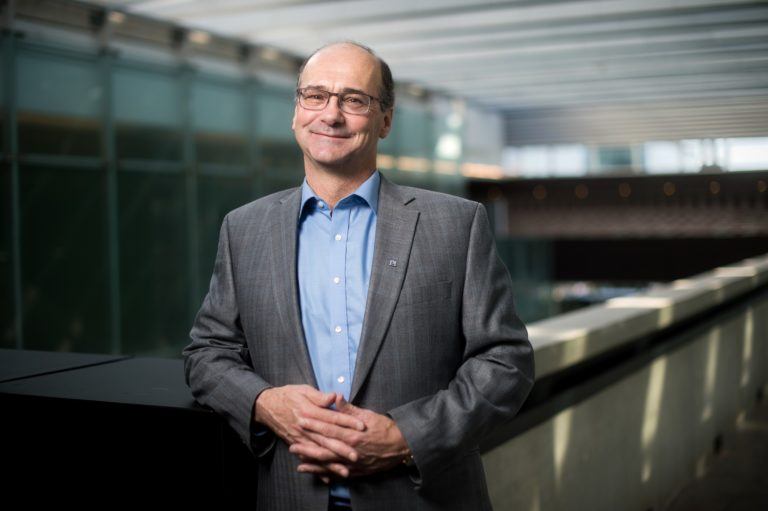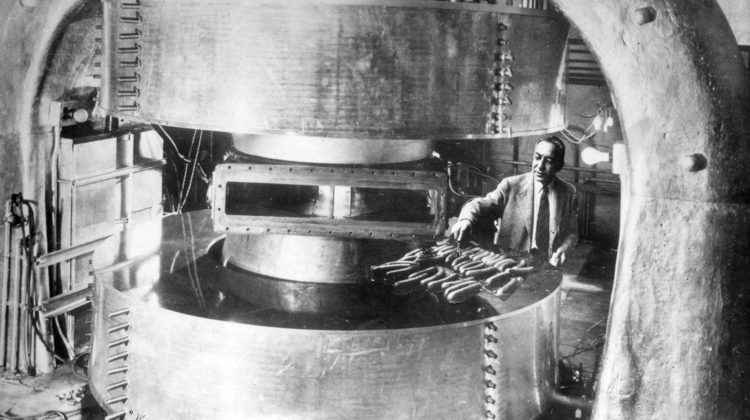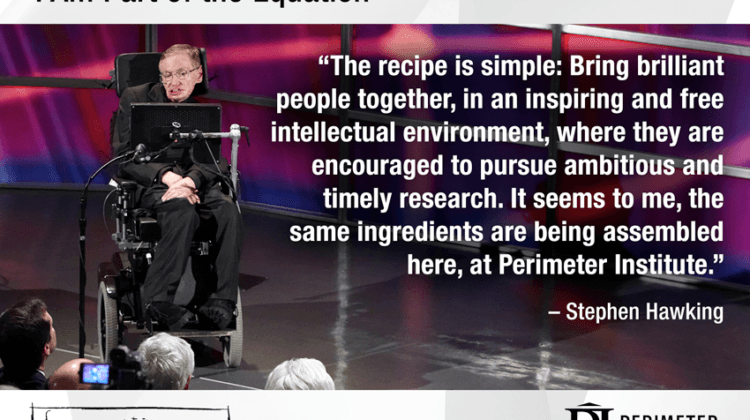Director’s Cut: Three words to build the future on
Perimeter Institute’s new Director, Robert Myers, reflects on the three key elements that brought him to Perimeter and that continue to push the Institute and himself.

If I had to sum up Perimeter Institute in three words – which is the sort of thing I’ve had to do a surprising number of times since becoming Perimeter’s Director in February – they’d be these: Simplicity. Clarity. Audacity.
I first heard about Perimeter back in the fall of 2000, when I met the Institute’s founding donor, Mike Lazaridis. Mike, in those days, was fresh from the launch of the BlackBerry, and he was moving fast. Within a few years, he and his team would take the BlackBerry from high-tech pager to the world’s first fullfledged smartphone.
In short, I met Mike at what had to be an exciting time for him. But he didn’t want to talk about smartphones. He wanted to talk about breakthroughs.
His BlackBerry, he said, was based on physics breakthroughs from 50 years ago, 100 years ago, 150 years ago. Breakthroughs in electromagnetism, in quantum theory, in many fields of physics. What drove the men and women who made those breakthroughs? Certainly not the quest for smartphones. No, they couldn’t have even conceived of such devices. They were doing something far simpler, and far more exciting: they were trying to understand how the universe works.
Mike put a question to me: What about the next breakthroughs, the ones that will shape the lives of our children, our grandchildren, and our grandchildren’s grandchildren? He believed that, with the right investment and a bold mission, we could strategically make those breakthroughs more likely.
He wanted to launch a new theoretical physics institute. This institute, he said, would bring together some of the best minds in the world, tackling the deepest and most difficult problems in physics. It would be free-standing. It would do away with the usual academic system, which makes so many scientists go for the safe bets. It would seek nothing less than breakthroughs.
For Mike, it was an investment in our collective future: a long-range investment, but a smart one, whose benefits would pay out over many generations. One thing that really stood out from our conversation was when Mike said, “We’re going to do something special here, for Canada and for the world. And we have to get it right.”
I was struck by the simplicity, the clarity, the audacity of his vision. Simplicity. Clarity. Audacity. Those are the hallmarks of a powerful idea. As a scientist, I know how precious ideas like that really are.
As I went home to Montreal, my conversation with Mike played over and over in my mind. Two days later, I found myself emailing to say, “I’m in. How can I help?” Soon after, I left my position at McGill and joined Perimeter as one of its founding faculty members.
Nineteen years later, the power of Mike’s idea has never left me, and it has never left Perimeter. It guided Neil Turok as he led Perimeter brilliantly over the past 10 years, bringing every aspect of our research, training, and outreach to the next level. It still inspires me and will inform everything I do as Director.
Perimeter’s a special kind of place. We don’t have any laboratories or any equipment more complicated than blackboards and computers. We like to say we run mostly on chalk and coffee. Yet Perimeter researchers have developed theories and tools behind headlining discoveries over the past decade. Frameworks developed by Perimeter scientists were used at the Large Hadron Collider when it detected the Higgs boson, and they are still in use. Perimeter scientists were involved in the detection of gravitational waves and proposed groundbreaking ways to use this new eye on the universe. Still others have been pioneers in the theory behind the fast-emerging technology of quantum computing. Earlier this year, Perimeter scientists played a crucial part in the detection of fast radio bursts at the new CHIME telescope. And now we’ve helped capture humanity’s first glimpse of a black hole.
Associate Faculty member Avery Broderick was key to the landmark black hole image produced by the Event Horizon Telescope (EHT). A leader in bringing together this international collaboration, Avery and his Perimeter team developed some of the crucial models and techniques that went into the EHT’s image, and he will be a leader in analyzing the data in the months and years to come.
It’s the same in many fields. At Perimeter, we don’t run the telescope – we develop the ideas that guide what the telescope should look for. We don’t run the particle detectors – we help make sense of the data they collect. We don’t build quantum computers – we develop ideas that will bring the coming quantum age to fruition.
Scientific exploration pays off. Like the men and women whose physics breakthroughs long ago power our smartphones today, at Perimeter we are trying to understand how nature works at its deepest levels. We aim to accelerate the pace of discovery into the fundamental workings of space, time, matter, and information.
I think back to Mike’s words, 19 years ago, and see that Perimeter has indeed become a special place, a beacon of excellence, and we want to preserve that. We are an example to the world, and we will continue to lead. We did get it right. But we’re going to make it even better. And so, with simplicity, clarity, and audacity, we will keep exploring.























































































